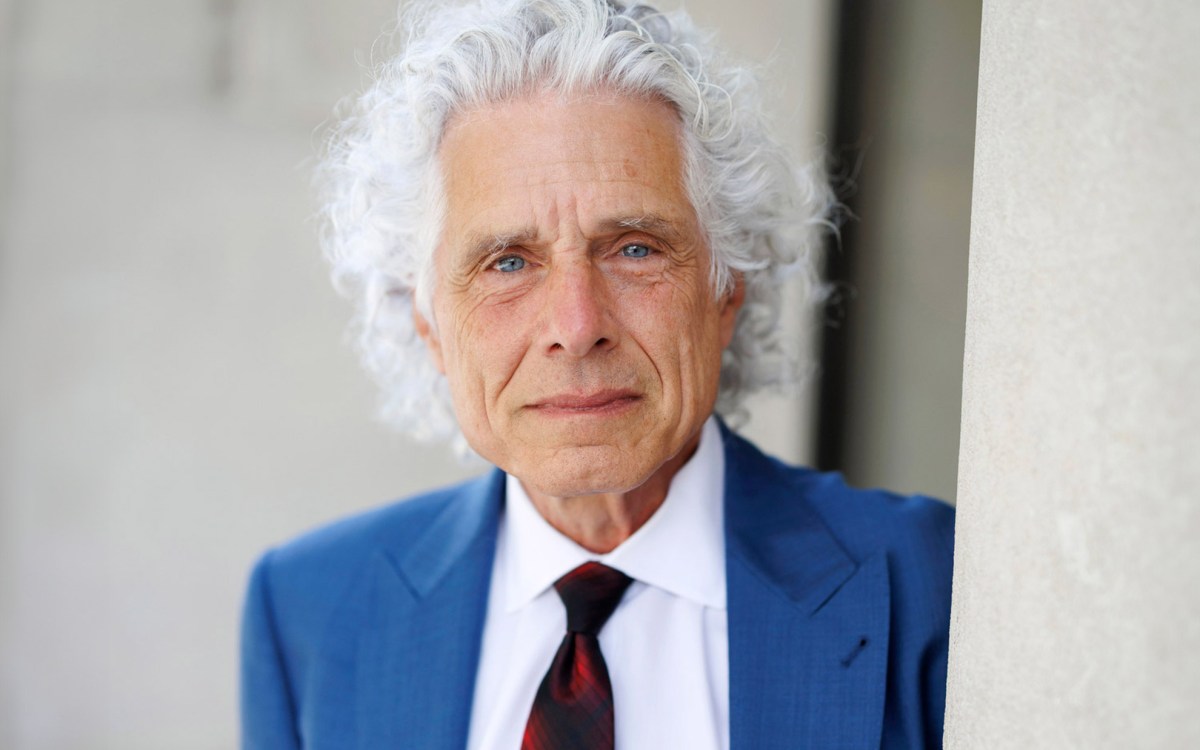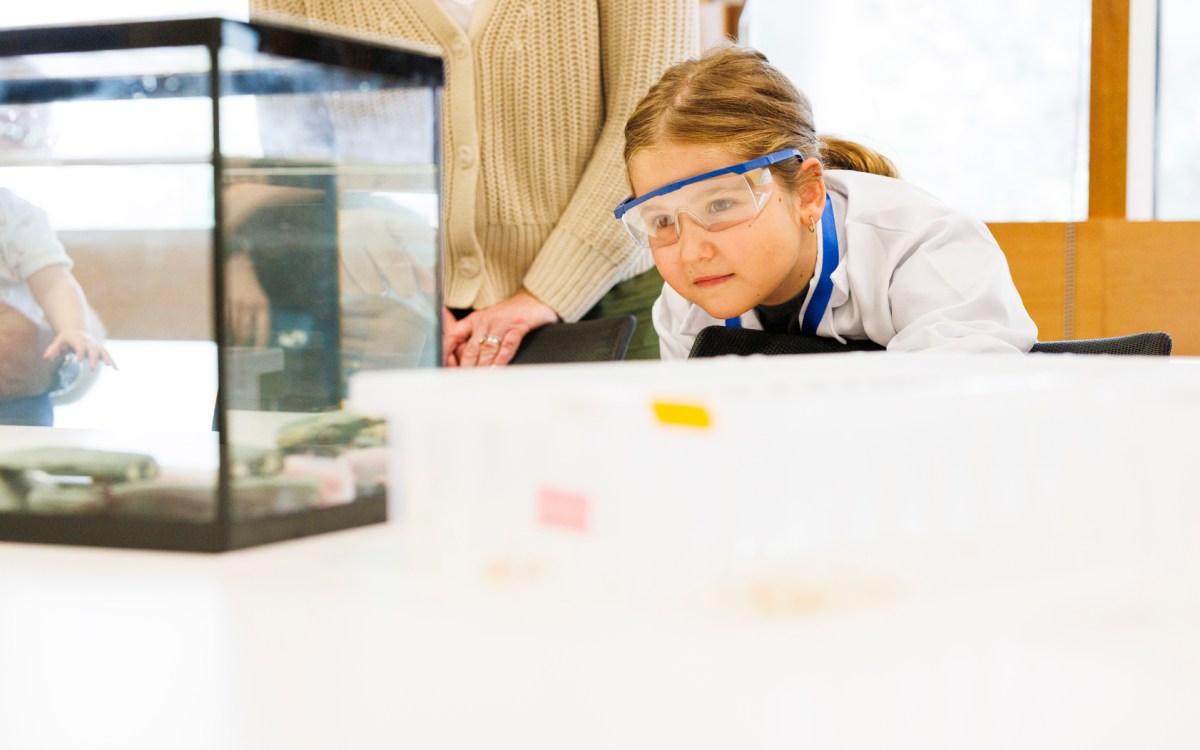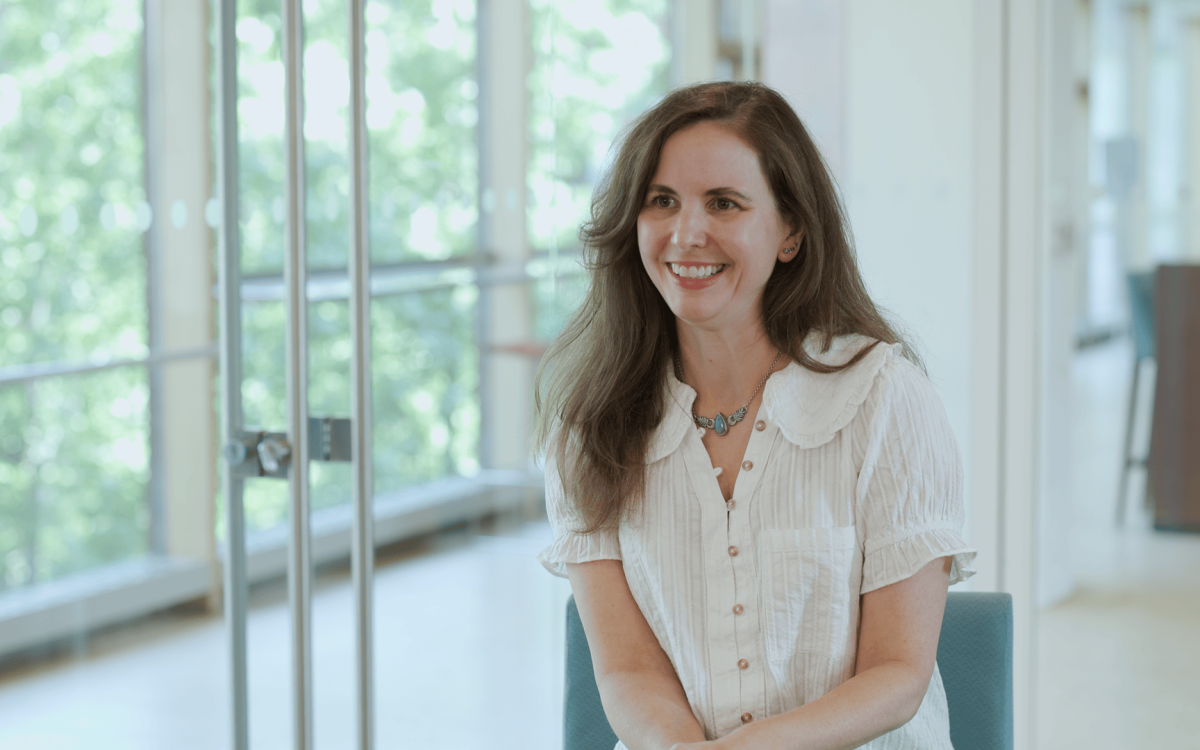Science & Tech
-

‘I exist solely for you, remember?’
Researchers detail 6 ways chatbots seek to prolong ‘emotionally sensitive events’

-

Clearing significant hurdle to quantum computing
Harvard physicists working to develop game-changing technology demonstrate 3,000 quantum-bit system
-

Think you understand kitchen science?
Our research-backed quiz will put your cooking knowledge to the test.
-

Why is your head not exploding? Steven Pinker can explain.
Cognitive psychologist reveals uncommon depths of common knowledge in new book
-

When your research donor is 6
First-grader raises $1,000 for axolotl research, meets her scientist hero — and maybe gets taste of what she wants to do when she grows up
-

‘It feels very personal’
Jessica Whited overcame many obstacles to become a scientist, and her work was rooted in family’s blue-collar history. Then came funding cuts.
-
Young pulsar reveals clues to supernova
Using the Chandra X-ray Observatory to learn more about pulsars, A team led by Stephen Murray of the Harvard-Smithsonian Center for Astrophysics in Cambridge, Mass., studied 3C58, the remains of…
-
Scientists find X-rays from stellar winds that may play significant role in galactic evolution
The Rosette Nebula is a nursery for stars. For hundreds of years, astronomers have been looking at this star-forming region and wondering about the forces at work there. Now, scientists…
-
Young stars in Orion may solve mystery of our solar system
Scientists who study how our solar system formed have been hard pressed to explain the presence of extremely unusual chemical isotopes found in ancient meteoroids orbiting the Earth. The isotopes…
-
Mysterious “two-faced” star explained, scientists say
Scientists looking at X-rays from a binary star system in the M15 globular star cluster have long been puzzled by the star system, which seemed to have two different sets…
-
Chandra catches Milky Way monster snacking
Researchers using the Chandra X-ray Observatory have, for the first time, observed the black hole at the center of our galaxy devouring material.
-
Medicaid coverage for anti-AIDS drugs would be cost effective
It’s long been said that “an ounce of prevention is worth a pound of cure.” A new study from the Harvard Center for Risk Analysis applies the principle to treating…
-
In N.J. study, 43% of new teachers plan to leave teaching
Harvard Graduate School of Education (HGSE) researchers are studying the future of teaching through the Project on the Next Generation of Teachers. With the number of students growing across the…
-
U.S. stepped aside during Rwandan genocide
Samantha Power, executive director of the John F. Kennedy School’s Carr Center for Human Rights Policy, conducted a three-year-long investigation into what the United States government knew, didn’t know, and…
-
Harvard undergraduate discovers novel atomic cluster
Eighteen-year-old Kevin Chan, a member of the Harvard College Class of 2004, used a supercomputer to discover a novel arrangement of atoms that had been missed by other scientists studying…
-
Why antimatter matters so much
In 1995, experimenters made nine or 10 atoms of antihydrogen at the Center for European Nuclear Research in Geneva, Switzerland. Since then, researchers have sought a method for making more…
-
Study suggests pacemaker and defibrillator recalls on the rise
As more heart patients receive pacemakers and implantable cardioverter-defibrillator (ICD) generators, more recalls are being issued for the devices, according to a study led by a Harvard Medical School instructor…
-
Study examines hazardous seating of children in fatal motor vehicle crashes
A recent study by Harvard School of Public Health scientists examined how often adults placed children in the rear of vehicles, and what factors affected that placement. The study, led…
-
In Dayton, parents’ satisfaction increased by moving children to private schools
Parents in Dayton, Ohio, reported increased satisfaction after they moved their children to private schools. A private scholarship program sponsored by Parents Advancing Choice in Education (PACE), a non-profit organization in Dayton, helps low-income families afford private education.
-
Study finds parents of chronically ill children avoid switching to HMOs
The incentive to switch health plans is usually a lower cost to the patient. So if parents of chronically ill children want to retain their old health plans instead of…
-
Some video games contain more violence than parents expect
If a video game is rated “E” for “suitable for everyone,” that is supposed to be a signal to parents that the game is acceptable for their children. But a…
-
Dating violence linked with teen pregnancy, suicide attempts
About one in five girls experience physical or sexual dating violence, according to a new study by researchers from the Harvard School of Public Health, the Boston University School of…
-
Stellar apocalypse yields first evidence of water-bearing worlds beyond our solar system
The first evidence that planetary systems beyond our own contain water, a molecule that is an essential ingredient for known forms of life, was discovered recently by using the Submillimeter…
-
Preventing cervical cancer in developing nations
Cervical cancer kills approximately 190,000 women each year, most of them in developing nations. It is the third most common cancer world wide. Women who live in more affluent nations…
-
New way to ‘see’ DNA
Research by Harvard scientists was driven by the need to make extremely small holes that mimic the pores in human cells through which different molecules must pass to keep the…
-
The skin’s the thing for conserving a building’s energy
It has been estimated that a third of the world’s energy is consumed by buildings, a third by transportation, and a third by industry. With gasoline prices rising and electrical…
-
School segregation on the rise despite growing diversity
Nearly 50 years after the U.S. Supreme Court declared Southern segregated schools to be unconstitutional, resegregation is happening again. And it is occurring despite the nation’s growing diversity. According to…
-
New report highlights safe, secure method for managing spent nuclear fuel
A joint Harvard University/University of Tokyo team of nuclear energy, nonproliferation, and waste management experts concludes in a new study that technologies are available to store spent nuclear fuel from…
-
No-fault compensation for medical injury proposed
Three jumbo jets filled with patients crashing every two days — that’s the analogy for the number of patients estimated to die annually from medical injury in the U.S. A…
-
Anatomy of the low-income homeownership boom in the 1990s
The rate of home ownership in the United States has grown to an unprecedented 67.7 percent since the 1990s. Low-income ownership has grown in particular. According to a study by…
-
Never-before-seen look inside the world of cancerous tumors
Harvard researchers working at Massachusetts General Hospital’s Radiation Oncology unit have used a powerful new microscope to see inside cancerous tumors. The microscope is so powerful that it can see…
-
National environmental policy during the Clinton years
Researchers at Harvard’s Kennedy School of Government examined the environmental policy record of former President Bill Clinton. Environmental quality improved overall during the decade, the researchers found, continuing a trend…
-
Eighty-five percent of immigrant children separated from families during migration
An ongoing study of more than 400 children who have immigrated to the United States shows that 85 percent of them experience separation from one or both parents during the…
-
Offshore investment funds: Monsters in emerging markets?
Less moderated by tax consequences, and less subject to supervision and regulation, offshore investment funds are alleged to engage in trading behaviors that are different from those of their onshore…
-
Housing market resilient in slowing economy
The housing market has not been affected by a slowing economy, according to a report, The State of the Nation’s Housing: 2001, released in June 2001 by the Joint Center…
-
Children from working-class families twice as likely to be depressed adults
Children from low socioeconomic backgrounds have an elevated risk of depression throughout their lifetimes, even if they become more professionally successful than their parents. That’s the conclusion of a study…


